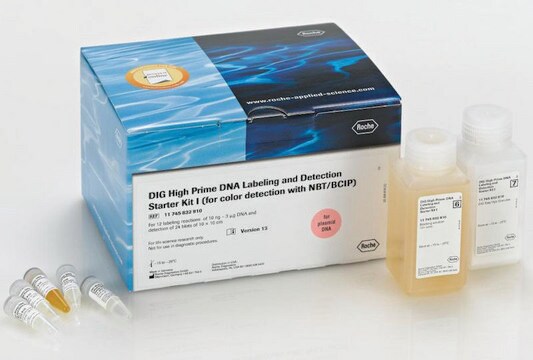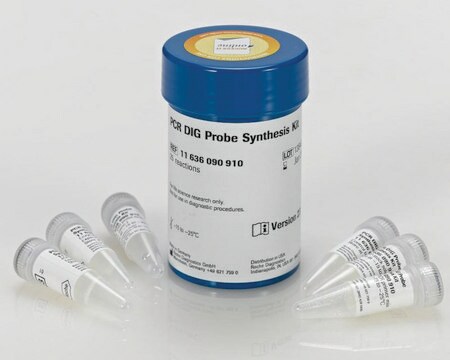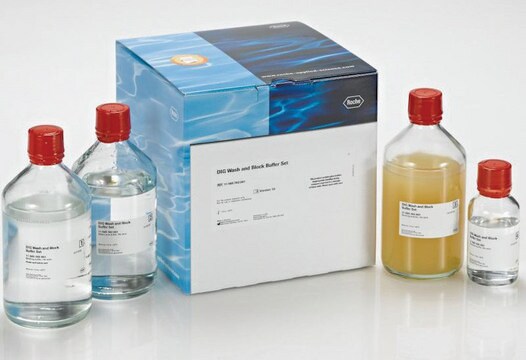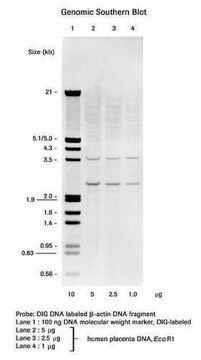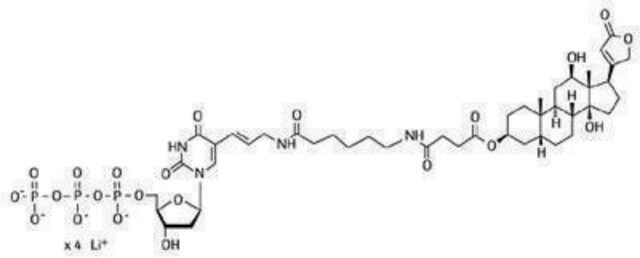11585614910
Roche
DIG-High Prime DNA Labeling and Detection Starter Kit II
sufficient for 12 labeling reactions (10 ng to 3 μg per assay), sufficient for 24 blots (blots of 100 cm2)
Synonyme(s) :
DIG system, dna labeling
About This Item
Produits recommandés
Utilisation
sufficient for 12 labeling reactions (10 ng to 3 μg per assay)
sufficient for 24 blots (blots of 100 cm2)
Niveau de qualité
Fabricant/nom de marque
Roche
Caractéristiques du produit alternatif plus écologique
Designing Safer Chemicals
Learn more about the Principles of Green Chemistry.
sustainability
Greener Alternative Product
Autre catégorie plus écologique
Température de stockage
−20°C
Description générale
Application
- in Southern blots
- in northern blots
- in dot blots
- in colony and plaque hybridizations
- for all types of filter hybridization
- for single-copy gene detection in total genomic DNA, even from organisms with high complexity, for example, human, barley, and wheat
Conditionnement
Principe
Autres remarques
Composants de kit seuls
- DIG-High Prime 5x concentrated
- DIG-labeled Control DNA, pBR328 (linearized with Bam HI) 5 μg/ml
- DNA Dilution Buffer
- Anti-Digoxigenin-AP Conjugate antibody
- CSPD ready-to-use
- Blocking Solution 10x concentrated
- DIG Easy Hyb Granules
Mention d'avertissement
Warning
Mentions de danger
Conseils de prudence
Classification des risques
Eye Irrit. 2 - Skin Irrit. 2
Code de la classe de stockage
12 - Non Combustible Liquids
Classe de danger pour l'eau (WGK)
WGK 3
Point d'éclair (°F)
does not flash
Point d'éclair (°C)
does not flash
Faites votre choix parmi les versions les plus récentes :
Déjà en possession de ce produit ?
Retrouvez la documentation relative aux produits que vous avez récemment achetés dans la Bibliothèque de documents.
Les clients ont également consulté
Articles
Digoxigenin (DIG) labeling methods and kits for DNA and RNA DIG probes, random primed DNA labeling, nick translation labeling, 5’ and 3’ oligonucleotide end-labeling.
Notre équipe de scientifiques dispose d'une expérience dans tous les secteurs de la recherche, notamment en sciences de la vie, science des matériaux, synthèse chimique, chromatographie, analyse et dans de nombreux autres domaines..
Contacter notre Service technique